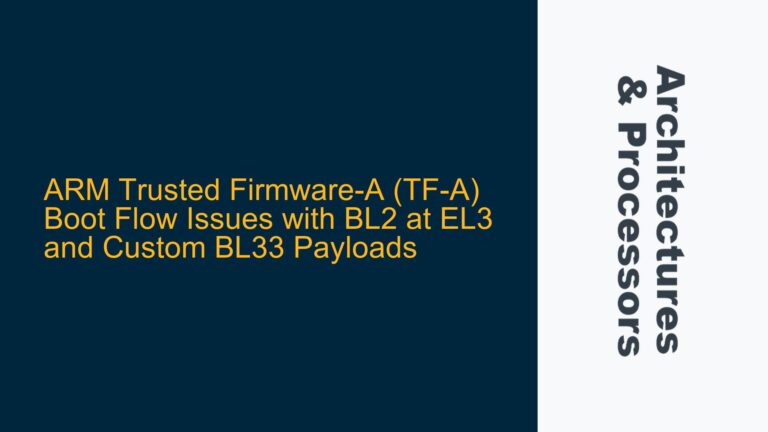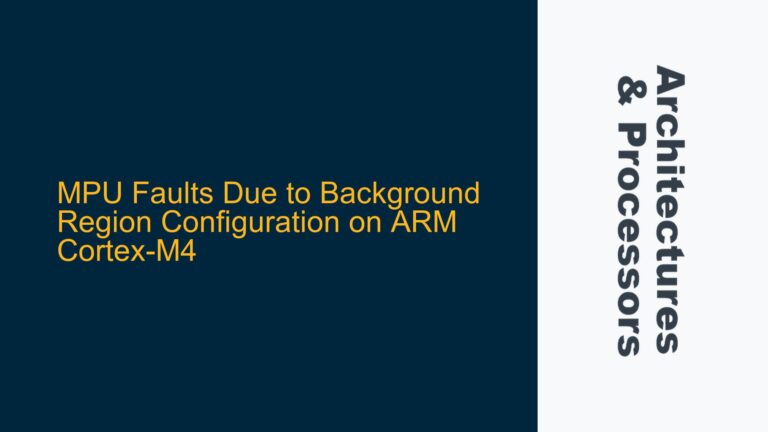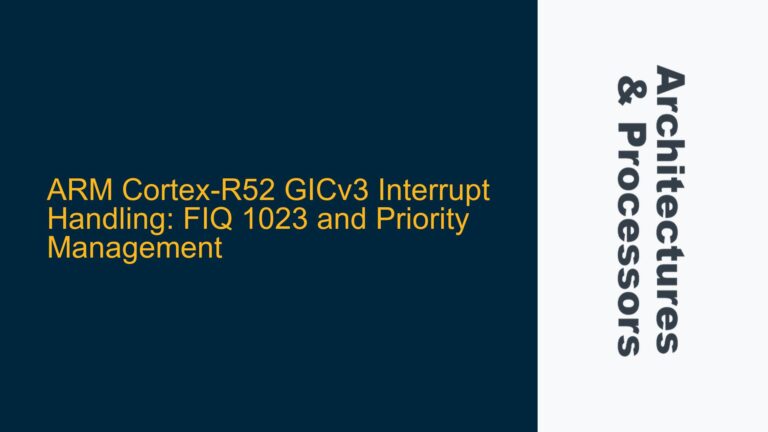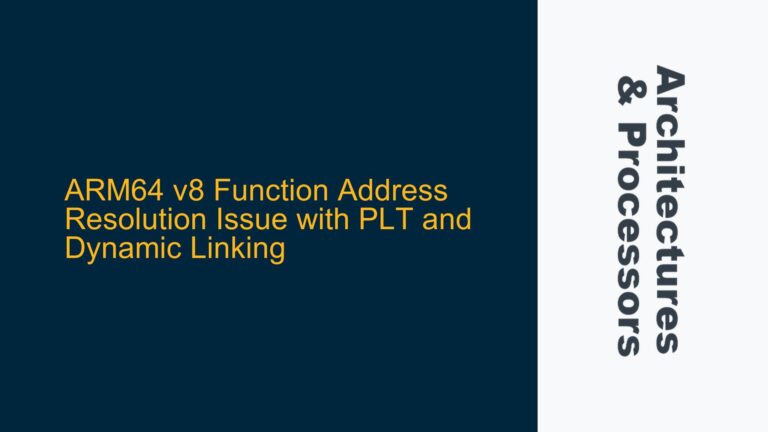LPC1857 On-Chip RAM Fragmentation and Keil IDE Limitations
The LPC1857 microcontroller, based on the ARM Cortex-M3 architecture, features 136KB of on-chip RAM distributed across three non-contiguous memory blocks. These blocks are located at specific address ranges: Block 1 (0x10000000 to 0x10007FFF, 32KB), Block 2 (0x10080000 to 0x10089FFF, 40KB), and Block 3 (0x20000000 to 0x2000FFFF, 64KB). While this memory configuration provides flexibility for various applications, it introduces challenges when integrating all RAM blocks into development environments like Keil IDE, which has limitations in handling non-contiguous memory regions.
Keil IDE, specifically version 5.20, restricts users to defining only two memory regions in the ‘Target’ options. This limitation prevents developers from utilizing the full 136KB of on-chip RAM, as only two out of the three blocks can be assigned. For example, a typical configuration might include Block 2 (0x10080000, 40KB) and Block 3 (0x20000000, 64KB), leaving Block 1 (0x10000000, 32KB) unused. This fragmentation can lead to inefficient memory utilization, especially in applications requiring large contiguous memory spaces or specific memory-mapped configurations.
The core issue lies in the mismatch between the LPC1857’s memory architecture and Keil IDE’s memory management capabilities. Developers must find workarounds to access the full 136KB of RAM while adhering to the IDE’s constraints. This requires a deep understanding of the LPC1857’s memory map, Keil IDE’s configuration options, and potential linker script modifications to ensure proper memory allocation and utilization.
Keil IDE Memory Configuration Constraints and Linker Script Limitations
The inability to assign all three RAM blocks in Keil IDE stems from two primary factors: the IDE’s memory configuration interface and the underlying linker script limitations. Keil IDE’s ‘Target’ options provide a graphical interface for defining memory regions, but this interface is designed for simplicity and does not support advanced configurations like non-contiguous memory blocks. The linker script, which governs memory allocation during the build process, is automatically generated based on the ‘Target’ settings and cannot be easily modified through the IDE’s graphical interface.
When only two memory regions are defined, the linker script allocates variables, stack, and heap within these regions, ignoring the third block entirely. This can lead to inefficient memory usage, as the unused block remains inaccessible to the application. Additionally, the linker script’s default behavior may not account for the specific requirements of the LPC1857’s memory map, such as alignment constraints or peripheral access requirements.
To overcome these limitations, developers must manually modify the linker script to include the third memory block. This involves defining a custom memory layout that incorporates all three RAM blocks and ensuring that the linker script correctly allocates memory across these regions. However, this approach requires a thorough understanding of the linker script syntax and the LPC1857’s memory architecture, as improper modifications can lead to runtime errors or unstable system behavior.
Custom Linker Script Configuration and Memory Allocation Strategies
To fully utilize the LPC1857’s 136KB of on-chip RAM in Keil IDE, developers must implement a custom linker script that accommodates all three memory blocks. This process involves several steps, including defining the memory regions, modifying the linker script, and verifying the memory allocation.
First, the memory regions must be explicitly defined in the linker script. This involves specifying the start address and size of each RAM block, as well as any alignment requirements. For the LPC1857, the memory regions can be defined as follows:
MEMORY
{
RAM1 (rwx) : ORIGIN = 0x10000000, LENGTH = 32K
RAM2 (rwx) : ORIGIN = 0x10080000, LENGTH = 40K
RAM3 (rwx) : ORIGIN = 0x20000000, LENGTH = 64K
}
Next, the linker script must be modified to allocate sections across these regions. This includes defining sections for the stack, heap, and variables, and ensuring that they are placed in the appropriate memory blocks. For example, the stack can be placed in RAM1, while the heap and variables are distributed across RAM2 and RAM3. This distribution can be achieved using the following linker script syntax:
SECTIONS
{
.stack :
{
. = ALIGN(8);
_sstack = .;
. = . + 0x1000; /* 4KB stack size */
_estack = .;
} > RAM1
.heap :
{
. = ALIGN(8);
_sheap = .;
. = . + 0x2000; /* 8KB heap size */
_eheap = .;
} > RAM2
.data :
{
. = ALIGN(8);
_sdata = .;
*(.data)
_edata = .;
} > RAM3
.bss :
{
. = ALIGN(8);
_sbss = .;
*(.bss)
_ebss = .;
} > RAM3
}
Finally, the memory allocation must be verified to ensure that all regions are correctly utilized. This can be done by examining the memory map generated by the linker and verifying that the stack, heap, and variables are placed in the intended memory blocks. Additionally, runtime tests should be conducted to confirm that the system operates as expected and that there are no memory access violations or alignment issues.
By implementing a custom linker script and carefully managing memory allocation, developers can overcome Keil IDE’s limitations and fully utilize the LPC1857’s on-chip RAM. This approach not only maximizes memory usage but also ensures optimal performance and stability for embedded applications.






